Every year, the Occupational Health and Safety Administration (OSHA) publishes a list of the top 10 most common violations they cite when inspecting worksites. OSHA compiles the list as a service to employers. The organization believes that by alerting them to these common issues, they’ll be more likely to recognize them on the job and take steps to alleviate them.
Here is the most recent OSHA top ten list, along with tips on how you can avoid being written up for these violations. We’ve also included links to the OSHA code for each violation.
1. Fall protection
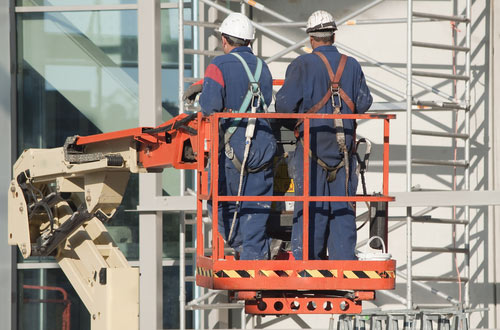
Falls from higher places to lower ones are common hazards when doing bridge inspection, maintenance, and construction work. Depending on the section of the bridge being worked on (under-bridge utility work is a particularly dangerous area), falls can lead to serious injuries and even death.
OSHA regulations require all surfaces on job sites be strong and stable enough to support workers safely. In addition, any work area that’s more than six feet above another (for example, road decking or bridge infrastructure and water or a roadway below it) should have guard rails or safety netting to protect workers from falls. If this isn’t possible, workers must be provided with personal fall arrest systems.
OSHA requires that holes on a walkway or working surface be securely covered. Employees working on the face of formwork or reinforcing steel six or more feet above the ground, roadway, or water must be protected by a personal fall arrest system, safety net, or positioning device.
Ramps, runways, and other walkways that are more than six feet above another level must have a guardrail. Excavated areas (for example, a foundation of an entrance ramp or to continue utility infrastructure from a bridge to an underground channel) that are six feet deep and not readily visible must be surrounded by a guardrail, fence, or barricade. Employees working above dangerous equipment must be protected from falling into or on it by a guard rail, equipment guard, personal fall arrest system, or safety net.
Also required by OSHA: Protect workers from objects that could fall on them from a higher level. Ensure that everyone on the job wears a hard hat, and set up canopies to provide an additional layer of protection.
One of the best ways to avoid falls on bridge inspection, maintenance, or construction jobs is to use safe, state-of-the-art equipment to get workers to hard-to-reach areas. Examples include the Bridgewalker, Hydra Platform, Paxton Mitchell Snooper, and Bridge Masters UBIT.
A company experienced in leasing this type of equipment can help you find the right solutions to meet your needs.
2. Hazard communication
All hazardous chemicals on construction sites must be classified and clearly labeled. Information about how to safely handle them must be posted and distributed to employees. Also provide adequate training to ensure that all workers know how to stay safe around dangerous chemicals.
Many bridges support utility infrastructure that transmits hazardous substances such as gas, chemicals, and waste products. An expert in bridge utility infrastructure can provide advice on how to work around it safely.
3. Scaffolding
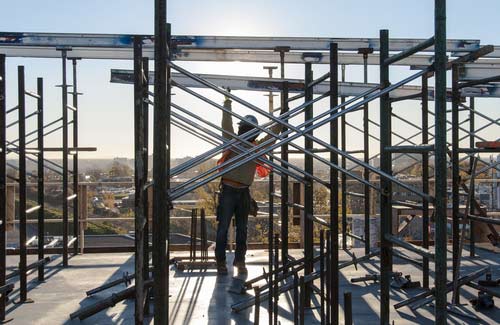
According to OSHA regulations, any scaffolding used on a job site must be able to support its own weight and at least four times its maximum intended load or any load that could cause it to tip over. When it comes to scaffolds suspended by ropes, they must be able to support at least six times the maximum load the rope is manufactured to hold.
Decking on any scaffold unit must be at least 18 inches wide and shouldn’t have spaces between planks greater than one inch unless there’s an absolute design requirement (for example, to run it around a column or post).
Tip: Many smart bridge contractors avoid the scaffolding safety issue by using lift equipment to get workers to higher areas of bridges. In fact, some under-bridge access machines like the Bridgewalker fit into places too small for most scaffolding.
4. Respiratory protection
Breathing in particles and contaminates is a significant threat to workers on bridge or building demolition sites, or when doing repairs on aging infrastructure. In addition, they could breathe in harmful chemicals if utility infrastructure is damaged in an accident.
OSHA makes it a priority and puts the onus on employers to prevent atmospheric contamination. They recommend doing this by:
- Enclosing or confining dangerous operations.
- Providing general or local ventilation as appropriate.
- Substituting less toxic materials if available.
When leveraging these solutions isn’t possible, they allow the use of respirators. There are many types of respirators that can be used on job sites. OSHA does a good job of describing all of them and explaining the proper use of each.
Tip: Contact an experienced bridge utility installation firm before doing repairs on damaged or aging utility infrastructure. It will help prevent accidents that could lead to respiratory illnesses.
5. Lockout / Tagout
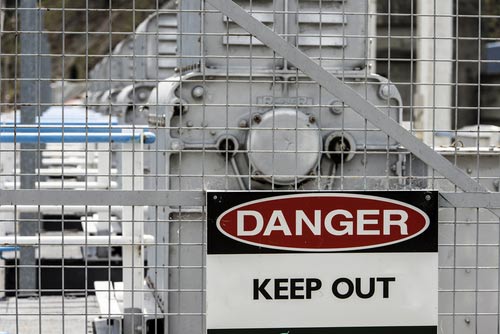
The use of power equipment contributes to many accidents on work sites. OSHA has recommendations about how to service, maintain, and protect employees from machines and equipment that could harm them, especially when the equipment could start up unexpectedly or release harmful energy (for example, electrical shock or gas fumes) while being used on the job.
In general, OSHA recommends that employees never be allowed to remove or bypass safety guards or protection devices. They also shouldn’t put their hands or other body parts into equipment (for example, to do repairs) that’s connected to a live power supply.
OSHA also puts the responsibility on the employer to leverage appropriate lock-out devices and systems to keep employees away from hazardous items. It is also the responsibility of the employer to conduct inspections of equipment and work procedures to make sure job sites are safe and secure.
Tip: OSHA regulations on this topic are complex, and it’s worth reviewing them regularly. In addition, it’s a good idea to work with a reputable supplier that can provide advice on how to use equipment properly.
6. Powered industrial trucks
Trucks are among the largest and most dangerous hazards on bridge construction sites. OSHA has rules to govern safe use of all types of vehicles, including:
- Fork trucks
- Tractors
- Platform lift trucks
- Motorized hand trucks
- Other specialized industrial trucks
Overall, OSHA regulations require all new trucking equipment be certified for work site use by a testing laboratory. Beyond that, never modify trucks to serve any function other than what they were designed, inspected, and certified to perform.
Also, never use vehicles in atmospheric conditions or near items that could cause explosions or fires, unless they’re manufactured and approved to work in these situations.
Beyond this, lighting must be adequate to operate the equipment effectively. In addition, all operators must be trained (including periodic refresher training) and licensed to use the equipment they work with. Unauthorized personnel should never be allowed to ride in vehicles. Also, trucks can only be used in places and spaces that are adequate (size, strength, etc.) for safe operation.
Needless to say, using large vehicles safely isn’t easy. OSHA offers details about how to do this. If you need additional information, a firm experienced in renting and running this type of machinery can help.
7. Ladders
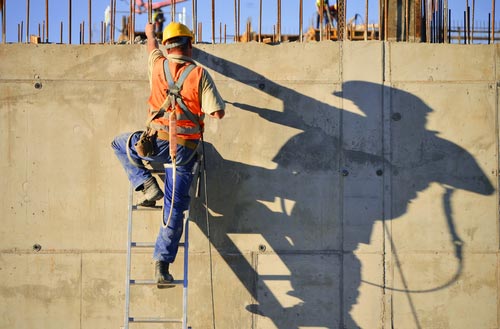
It’s difficult to reach certain sections of bridges, and workers frequently use ladders to get to them. OSHA provides guidance on how to do this safely.
Ladders on job sites must be independently tested for load-bearing capability. Depending on the type of ladder, it must be able to support three to four times the load it is designed to bear, which at a minimum must be at least two 250-pound loads on two different rungs of the ladder.
The rungs on standard ladders must be between eight and 18 inches apart and for extension ladders, between six and 12 inches. Ladder supports should be 16 inches apart.
Ladders must have surfaces that prevent slips and other accidents that could lead to scratches, punctures, broken bones, and other injuries. Damaged ladders must be removed from a job site until they’re repaired.
In addition to these requirements, OSHA provides advice on how to position ladders (including angles, distances from walls, extension limits, etc.) and use them safely. It also has rules on affixing ladders to the sides of bridges and other structures. It’s a good idea to review these guidelines with workers on a regular basis.
Tip: In most cases, it makes more sense to use equipment designed to get to hard-to-reach areas of bridges rather than ladders. This equipment helps workers feel more safe and secure.
8. Electrical wiring methods
OSHA regulations require all metal elements on a job site to be grounded to prevent electrical shocks. This is an important safety concern when employees are working on or near metal bridge structural supports.
Temporary power systems approved for use on bridge and other job sites are limited to 600 volts unless more power is required for testing, doing experiments, handling emergencies, or when absolutely needed to handle construction-related activities.
Conductors must be run as multi-conductor cord or cable assemblies or open conductors. If they’re run as open conductors, they are required to be fastened above the ground every 10 feet (they cannot lay on the ground). Feeders run as single insulated conductors are acceptable if installed by, and are only accessible to, qualified persons. Branch circuits must originate in an approved power outlet or panel board, and conductors have to be multi-conductor cord or cable assemblies or open conductors.
To provide enhanced safety, disconnecting switches or plug connectors must be installed to allow ungrounded conductors of each temporary circuit to be shut down. The same is true of multi-wire branch circuits, which have to be able to be shut down simultaneously.
Temporary lighting systems must be rated for use on the job (heavy-duty outdoor use for bridge sites) and provide protection from direct contact with bulbs to avoid burns, shocks, and breakage-related injuries. Cords and cables have to be protected from accidental damage from things like sharp corners, projections, and doorways or other pinch points.
Cable assemblies and flexible cords and cables must be supported above ground or protected from physical damage by staples, cables ties, or straps.
Providing temporary power for lighting and equipment on a job site is a complex process. Always work with an experienced electrician to make sure you get things right and meet all the complex requirements laid out by OSHA.
9. Machine guarding
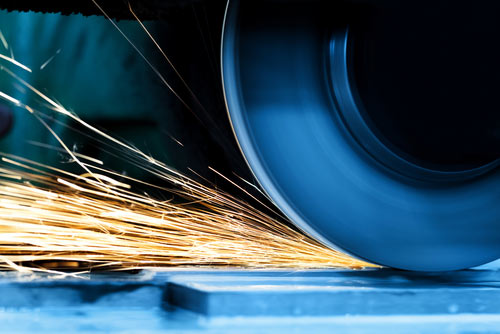
OSHA places responsibility on employers to guard employees from the dangerous aspects of working with and around machinery. This includes protection against hazards related to nip points, rotating parts, flying chips, and sparks. Types of protection can include things like barrier guards, two-hand tripping devices, and electronic safety devices.
Whenever possible, machine guards should be connected to the machine to provide the highest level of safety protection. It must be designed and attached in a way doesn’t create an additional hazard.
Another important point: Workers must never put their hands at risk to use any equipment (for example, to hold something near a saw blade or grinder).
10. Electrical
Any electrical component used on a job site must be inspected and approved for its intended use by a recognized testing and rating agency. It should never be modified or used in a way it’s not designed for.
OSHA leaves it up to employers to ensure equipment on job sites has no recognized hazards that could cause physical harm to employees or lead to death. It’s up to them to do regular inspections to ensure everything is up to code. This includes checking that all guards and devices to protect employees are in place and functioning correctly.
OSHA has more guidelines on electrical safety on job sites than on virtually any other topic. Most bridge construction contractors, inspection firms, engineers, and government agencies are well advised to partner with an experienced electrical contractor to keep job sites safe and OSHA-compliant.
Conclusion
Avoiding an OSHA citation isn’t easy. It takes diligence to maintain a safe bridge construction site. Bookmark this article so you have links to OSHA guidelines handy when you need them.

